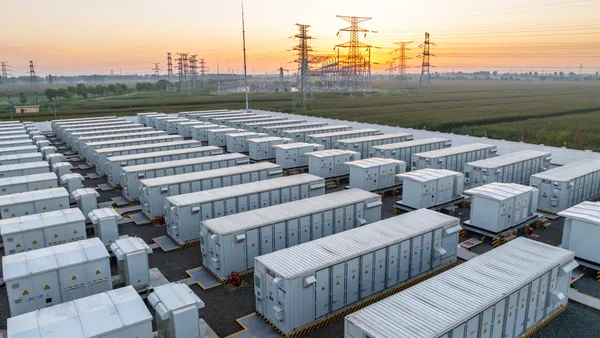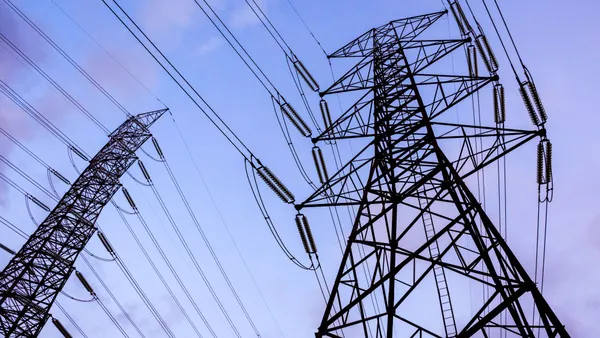Dive Brief:
- The U.S. saw more than 3 GW/10.5 GWh of energy storage deployments in the second quarter of 2024, up 74% and 86%, respectively, from Q2 2023 and the most for any second quarter to date, Wood Mackenzie and the American Clean Power Association said last week.
- Utility-scale storage accounted for 2,773 MW/9,982 MWh of the total, with 85% of new capacity installed in California, Arizona and Texas, the organizations said in the latest edition of the quarterly Energy Storage Monitor. Distributed storage accounted for 238 MW/510 MWh as a slow pace of residential installations in California, Puerto Rico and Hawaii offset a record-setting quarter for California’s commercial and industrial segment.
- The average price of a grid-scale energy storage system declined 4% from Q1 to Q2 2024 and 34% from Q2 2023 to Q2 2024 as some U.S. battery integrators take a “wait and see” approach to further domestic investment ahead of the November election, the report said.
Dive Insight:
Despite falling input costs and favorable U.S. policy that could make domestically-produced lithium-ion systems cost-competitive with Chinese systems as soon as 2026, some battery suppliers are delaying, downsizing or canceling planned U.S. manufacturing investments, Clean Energy Associates said in two August reports.
But manufacturer uncertainty hasn’t dampened foreign and domestic investor enthusiasm for U.S. battery energy storage projects, fDi Intelligence said in August. Investors pledged $11.45 billion to U.S. battery energy storage projects in the first half of 2024, exceeding the approximately $9 billion pledged in all of 2023, fDi said.
The utility-scale segment saw the fastest growth in Q2 2024, with installations up 91% on a MWh basis from the year-ago period, the WoodMac/ACP report said. The utility-scale project pipeline grew 16% during the same period, from 519 GW to 601 GW, the report said.
The community-scale, commercial and industrial, or CCI, segment recovered from an unusually slow first quarter to notch 61% year-over-year growth on a MWh basis, according to the report. California’s record quarterly capacity increase of 14.4 MW came despite just 12% of second-quarter installs happening under the storage-friendly Net Billing Tariff, which won’t fully phase in for commercial and industrial customers until 2026, the report said.
The residential segment’s 12% year-over-year growth — from 377 MWh in Q2 2023 to 423 MWh in Q2 2024 — was much slower as tariff changes in Hawaii and Puerto Rico held back activity there, according to the report. InCalifornia, 60% of systems installed in Q2 2024 qualified for the Net Billing Tariff, propelling the storage attachment rate for solar PV systems installed there to 70% — far ahead of the national storage attachment rate of 26%.
U.S. energy storage deployments across all segments are expected to reach 12.7 GW/36.7 GWh for full-year 2024, up 42% on a GW basis and 35% on a GWh basis, according to WoodMac/ACP. Grid-scale installations are expected to account for the lion’s share of the 2024 total at 11 GW/32.7 GWh, a 32% year-over-year increase, the report said.
Total U.S. energy storage deployments are expected to reach 74.6 GW/251.3 GWh for the 2024-28 period, with CCI activity lower than previously forecast due to “the complexity of developing these projects and the limited availability of financial value streams,” WoodMac/ACP said. Development challenges related to permitting, siting and the interconnection queue will reduce installations industry-wide in 2025 and 2026 before activity ramps back up in 2027 and 2028, according to the report














